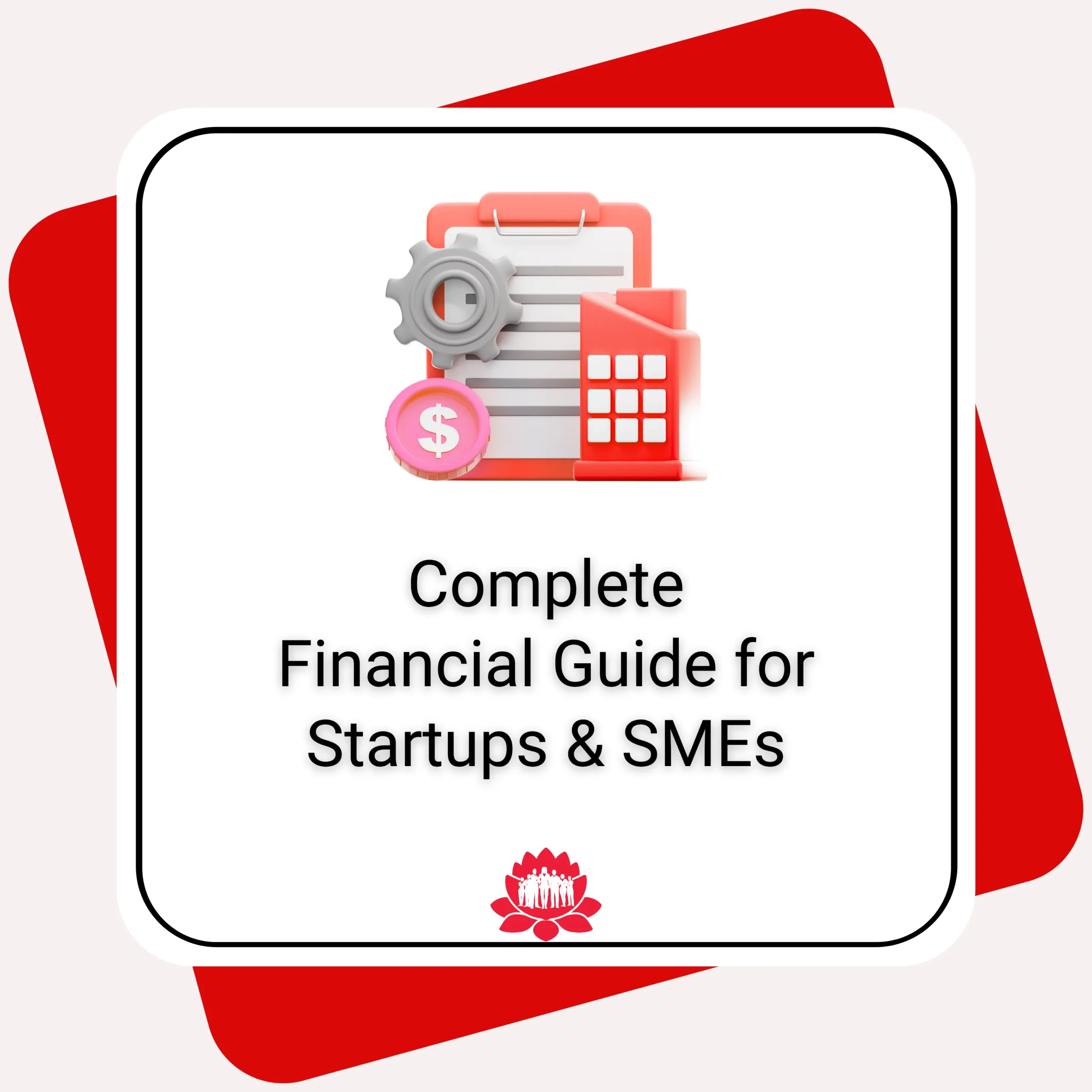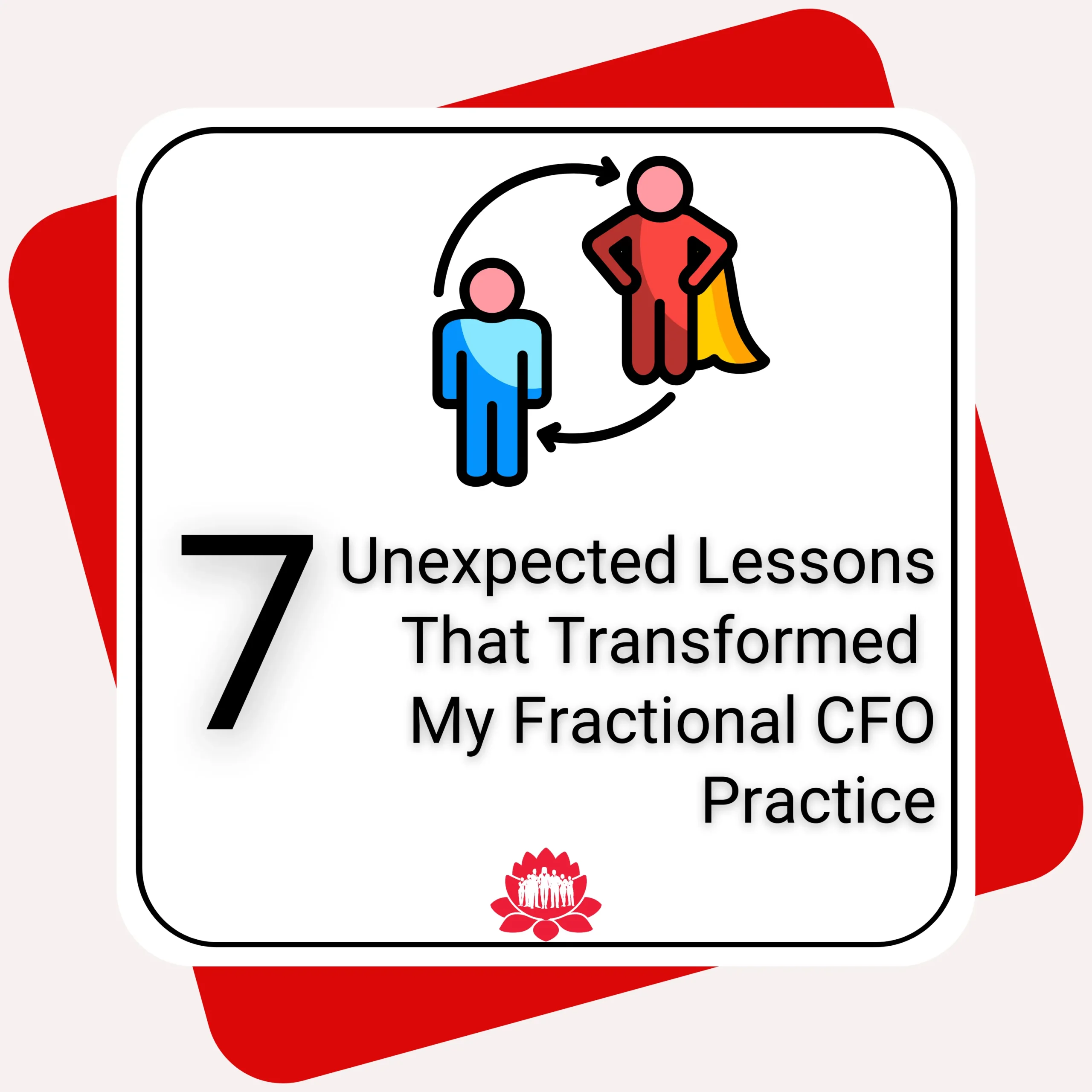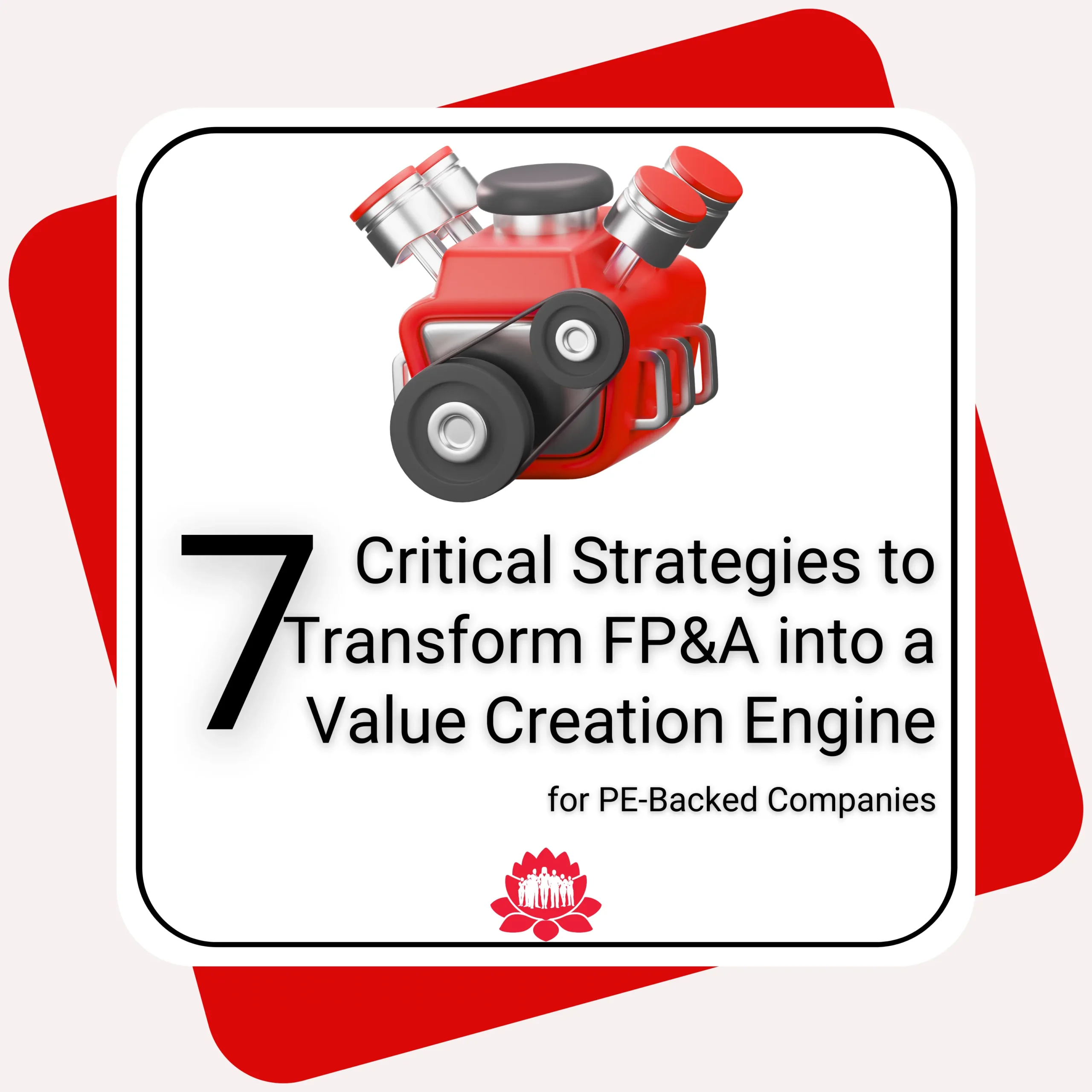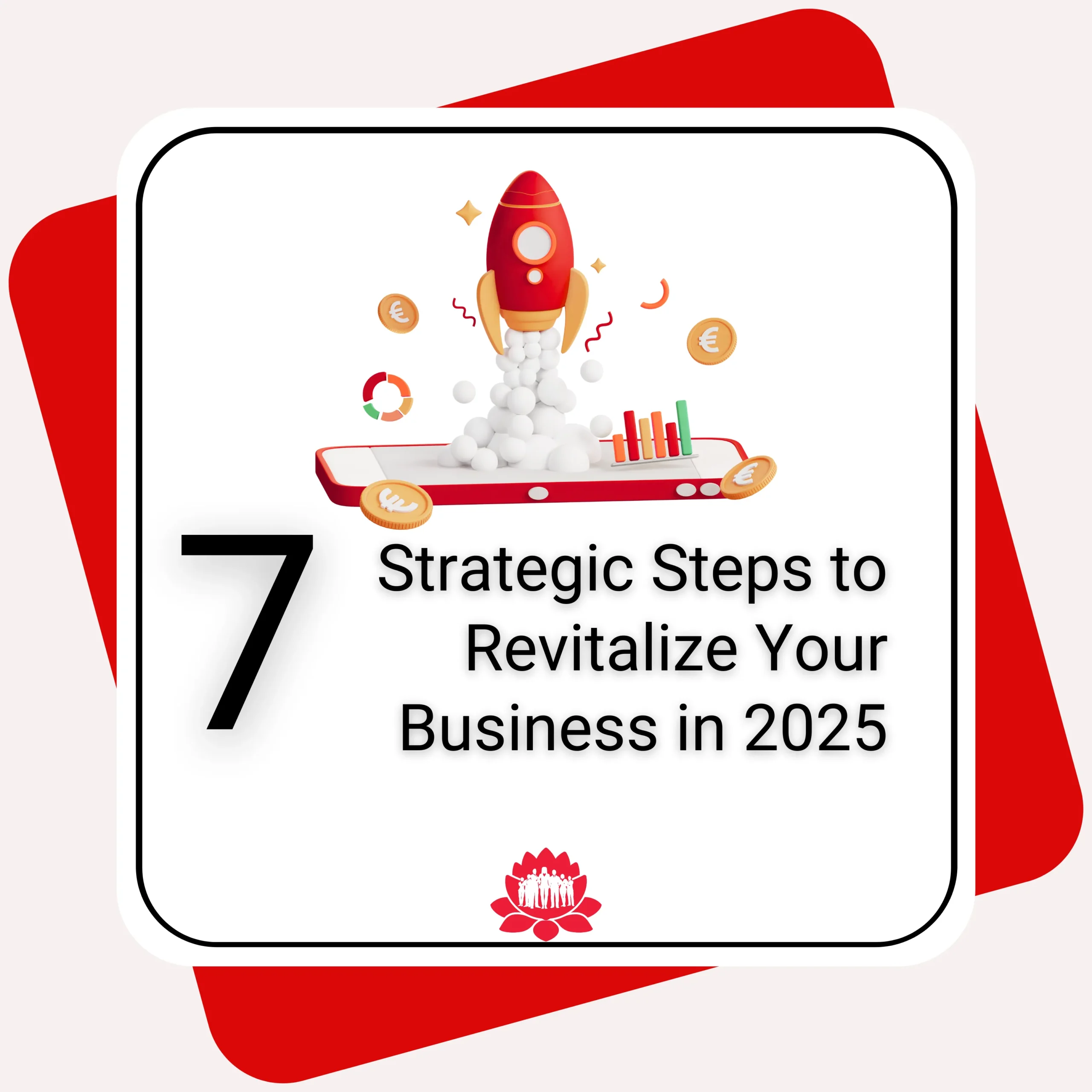Complete Financial Guide for Startups & SMEs

7-Pillar Framework to Financial Mastery
After 25 years of guiding businesses through financial transformations, I've learned that the difference between companies that thrive and those that merely survive isn't just about having a great product—it's about mastering the seven fundamental pillars of financial excellence.
The High-Level View: Your Financial North Star
Listen, I've seen brilliant entrepreneurs with game-changing ideas crash and burn because they treated finance like that relative you only visit during holidays—necessary, but not someone you really want to spend time with. Here's the truth: your financial strategy isn't just about numbers on a spreadsheet; it's about creating a sustainable foundation for your vision to flourish.
Think of this guide as your financial GPS. We're going to cover the seven essential pillars every startup and SME needs to master:
The Seven Pillars of Financial Mastery:
- Foundation Building - Getting your financial house in order
- Cash Flow Mastery - The lifeblood of your business
- Financial Planning & Budgeting - Your roadmap to success
- Performance Measurement - Knowing what's working and what isn't
- Financing Strategy - Funding your growth intelligently
- Risk Management & Controls - Protecting what you've built
- Growth Management - Scaling without breaking
Now, let’s dive deeper into each pillar, because the devil (and the success) is truly in the details.
Pillar 1: Foundation Building - Your Financial Infrastructure
The Accounting System That Actually Works
You know what I tell every client? "Your accounting system should work for you, not against you." After watching countless businesses struggle with frankenstein accounting setups, here's what you actually need:
Start with the right platform. QuickBooks Online or similar platform for most businesses, NetSuite if you're scaling fast and have the budget. Don't get fancy until you need to—but do get it right from day one.
Chart of accounts that makes sense. I've seen business owners create 200+ account categories because they thought more detail equals better insights. Wrong. Start simple: Revenue, Cost of Goods Sold, Operating Expenses, Assets, Liabilities, Equity. You can always add granularity later.
Monthly closes that close. If it takes you more than 10 business days to close your books each month, something's broken. Fix the process, not the person trying to manage it.
Banking and Cash Management
Here's where I see a lot of smart people make rookie mistakes. Separate business and personal finances immediately. I don't care if you're a sole proprietor—muddy waters create muddy decisions.
Set up three accounts minimum:
- Operating account for daily expenses
- Tax savings account (save 25-30% of net profit)
- Emergency fund (3-6 months of operating expenses)
Use business credit cards strategically. They're not evil—they're tools. Pay them off monthly, track expenses automatically, and build business credit history.
Legal Structure and Tax Strategy
Your business structure affects everything from taxes to investment opportunities. Don't just pick LLC because it sounds cool or incorporate because it feels official.
Sole Proprietorship/Partnership: Simple, but personal liability exposure LLC: Flexibility with protection, but watch the self-employment taxes S-Corp: Tax advantages once you hit a certain profit, but more complexity C-Corp: If you're raising venture capital or planning massive scale
Work with a CPA and attorney who understands your industry. Tax strategy isn't just about April 15th—it's about structuring your business for optimal cash flow all year long.
Pillar 2: Cash Flow Mastery - The Lifeblood of Business
Understanding Your Cash Conversion Cycle
Cash flow isn't revenue minus expenses—it's more nuanced than that. Your cash conversion cycle tells the real story:
Days Sales Outstanding (DSO) + Days Inventory Outstanding (DIO) - Days Payable Outstanding (DPO) = Cash Conversion Cycle
Translation: How long does it take to turn your investments into cash? The shorter, the better.
The 13-Week Rolling Cash Flow Forecast
This is my secret weapon. Maintain a 13-week rolling cash flow forecast. Here's why it works:
- Week 1-4: Actual data with high confidence
- Week 5-8: Good visibility, plan accordingly
- Week 9-13: Scenario planning and early warning system
Track consistently: starting cash, collections, payments, ending cash. Add a "cash floor" line—the minimum you need to operate. When forecasted cash approaches that line, you act immediately, not when you're already there.
Managing Receivables and Payables Like a Pro
Net 30 terms are not suggestions. Follow up on day 31, not day 45. Use this sequence:
- Day 31: Friendly email reminder
- Day 45: Phone call
- Day 60: Formal notice
- Day 75: Collections agency or attorney
Offer early payment discounts (2/10 net 30 is still common). Sometimes a 2% discount is worth accelerating cash by 20 days.
For payables, pay strategically. Take advantage of payment terms, but protect your reputation. Small business is about relationships—burning bridges over a few days' float isn't worth it.
The key question I ask myself: "What single financial perspective, if embraced by this audience, would create the greatest positive impact on their businesses or careers?"
For a recent talk to early-stage founders, this insight centered on reframing runway from a defensive metric ("months until we're out of cash") to an offensive one ("months we have to prove specific milestones that unlock our next chapter").
The most powerful insights often challenge conventional financial wisdom while offering a new framework that feels intuitively correct once articulated. I refine this core insight until I can express it in a single, memorable sentence that the audience can carry forward.
Pillar 3: Financial Planning & Budgeting - Your Strategic Roadmap
Building Budgets That Actually Guide Decisions
Your budget should be a living document, not a once-a-year exercise in creative writing. Build it bottom-up:
Revenue forecasting: Start with sales pipeline, historical conversion rates, and realistic growth assumptions. Don't budget hockey stick growth unless you can explain exactly how you'll achieve it.
Expense planning: Fixed costs first, then variable costs tied to revenue drivers. Include a "miscellaneous" line item—trust me, life happens.
Capital expenditure planning: Don't let equipment purchases blindside your cash flow. Plan major investments at least six months in advance.
Scenario Planning That Prepares You for Reality
Build three scenarios for everything: Best case (20% above plan), most likely (your actual budget), worst case (20% below plan). Have action plans for each scenario.
When revenue is tracking 15% below plan, you don't wait to see if it gets worse—you execute your contingency plan immediately.
Rolling Forecasts vs. Static Budgets
Static annual budgets are about as useful as last year's weather forecast. Implement rolling forecasts that extend 12-18 months into the future, updated quarterly with actual results and revised assumptions.
This keeps your planning relevant and your decisions grounded in current reality, not January's optimism.
Pillar 4: Performance Measurement - Your Financial Dashboard
Key Performance Indicators (KPIs) That Actually Matter
Stop tracking vanity metrics. Focus on metrics that predict financial performance:
For Product Companies:
- Gross margin percentage
- Inventory turnover
- Customer acquisition cost vs. lifetime value
For Service Companies:
- Utilization rates
- Average project value
- Client retention rate
For SaaS Companies:
- Monthly recurring revenue (MRR)
- Churn rate
- Customer acquisition cost payback period
Review these regularly and consistently.
Frequent monitoring drives better decision-making.
Financial Reporting That Tells a Story
Your financial reports should answer three questions: Where are we? How did we get here? Where are we going?
Monthly financial package should include:
- Profit & Loss (actual vs. budget vs. prior year)
- Balance sheet with key ratios
- Cash flow statement
- Accounts receivable aging
- Key metrics dashboard
Make it visual. Charts and graphs communicate faster than rows of numbers.
Benchmarking Against Industry Standards
Know how you compare to your peers. Industry benchmarks for gross margins, operating expenses as a percentage of revenue, and working capital requirements help you understand if you're on track or need to course-correct.
You don’t need the most sophisticated systems, but you do need systems that give you visibility and control.
Neeti Dewan
CEO, Platinum AdvantEdge
Pillar 5: Financing Strategy - Fueling Your Growth Engine
Know Your Financing Options Before You Need Them
Bootstrapping: Maintain control, slower growth, but you keep 100% of the upside Revenue-based financing: Good for consistent cash flow businesses, faster than traditional loans Traditional bank loans: Cheaper money, but strict requirements and personal guarantees Equipment financing: Specific to asset purchases, typically easier to qualify
Lines of credit: Flexibility for working capital needs
Equity financing: Fastest growth potential, but you're giving up ownership and control
Each has its place. Don't raise money just because everyone else is—raise it when it accelerates your path to profitability or market dominance.
Working Capital Management
Growth requires investment. More sales mean more inventory, more receivables, more people. This is the paradox of profitable growth—you can grow yourself out of cash.
Monitor your working capital ratio monthly: (Current Assets - Current Liabilities) / Revenue. If this percentage is increasing rapidly, you're consuming cash to grow. Plan accordingly.
Building Relationships with Capital Sources
Start building relationships with banks, investors, and alternative lenders before you need money. When you're desperate, you negotiate from weakness. When you're prepared, you negotiate from strength.
Pillar 6: Risk Management & Controls - Protecting Your Foundation
Internal Controls That Prevent Problems
Segregation of duties: The person who writes checks shouldn't reconcile bank statements Approval hierarchies: Establish spending limits and approval requirements
Regular reconciliations: Bank accounts, credit cards, and balance sheet accounts monthly Physical controls: Limited access to checkbooks, petty cash, and financial systems
Good controls don't slow you down—they speed you up by preventing costly mistakes and fraud.
Insurance and Legal Protection
Business insurance essentials:
- General liability
- Professional liability (errors & omissions)
- Property insurance
- Workers' compensation
- Key person life insurance
- Cyber Security insurance
Review coverage annually. As your business grows, your risks change.
Compliance and Regulatory Requirements
Stay current with:
- Tax filing deadlines (federal, state, local)
- Employment law requirements
- Industry-specific regulations
- Contract compliance requirements
Penalties and legal issues are profit killers. An ounce of prevention is worth a pound of cure.
Data Security and Financial Information Protection
Your financial data is valuable. Protect it with:
- Regular backups (test recovery procedures)
- Secure access controls
- Updated software and security patches
- Employee training on cybersecurity
A data breach can destroy years of hard work overnight.
For these formats, I thoroughly research:
- The background and perspective of the interviewer or fellow panelists
- Their recent public statements or published work
- Areas where our viewpoints align or diverge
- Questions they're likely to pose based on their interests
Before a recent fireside chat with a well-known public figure, I listened to several episodes of her podcast to understand her style and the themes she consistently explores. This allowed me to anticipate her approach and prepare thoughtful responses that would create value for the audience.
The goal isn't to pre-script exchanges but to enter the conversation with sufficient context to make it substantive and insightful from the first question.
Pillar 7: Growth Management - Scaling Your Financial Operations
Systems and Process Scalability
Your current financial processes got you here, but they won't get you there. Plan system upgrades before you need them:
- Manual processes: Good for <$1M revenue
- Automated workflows: Necessary at $1M-$5M
- Integrated ERP systems: Required above $5M
Don't wait until your system breaks to upgrade. That's like changing tires while driving on the highway.
Building Your Financial Team
You don't need a full accounting department on day one, but you do need the right support:
Phase 1 (Startup): Fractional CFO + Bookkeeper
Phase 2 (Growth): Fractional CFO + Staff Accountant + Bookkeeper
Phase 3 (Scale): Full-time Controller/Fractional CFO + Accounting Team
Invest in financial talent before you think you need it. A good financial leader pays for themselves by avoiding mistakes and identifying opportunities.
Scaling Financial Operations
As you grow, your financial complexity increases exponentially. Plan for:
Multi-entity management: Subsidiaries, joint ventures, international operations
Advanced reporting: Consolidated financials, segment reporting, transfer pricing
Sophisticated forecasting: Multi-scenario planning, sensitivity analysis
Enterprise systems: ERP implementation, business intelligence tools
Each growth phase requires different capabilities. Build your financial infrastructure to support your growth plans, not just your current needs.
Exit Strategy Preparation
Whether you're planning to sell, go public, or pass the business to family, financial readiness is crucial:
- Clean financial records: Audited statements create credibility
- Normalized earnings: Remove one-time items and owner perquisites
- Strong financial team: Buyers want continuity
- Documented processes: Systems that don't depend on you personally
Start preparing for exit the day you start your business. It's never too early to build value.

Final Thoughts From The Executive Yogi
After 25 years of helping businesses transform their financial futures, here's what I know for certain: Financial mastery isn't about being perfect—it's about being intentional across all seven pillars.
You don't need to become an accountant, but you do need to understand your numbers well enough to make confident decisions. You don't need the most sophisticated systems, but you do need systems that give you visibility and control.
Start where you are, with what you have, but start today. Pick one pillar from this guide and strengthen it this month. Then move to the next pillar. Financial transformation happens one decision, one system, one process at a time.
Remember, every Unicorn and Fortune 500 company started exactly where you are now—with a dream, determination, and the wisdom to build solid financial foundations across all seven pillars.
Your business deserves that same comprehensive foundation. More importantly, you deserve the peace of mind that comes from knowing your financial house is built on bedrock, not sand.
Now go build something amazing.
If you’re ready to strengthen all seven pillars of your financial operations, let’s talk about how fractional CFO services can accelerate your journey to financial mastery.
Reach out to us at [email protected]






